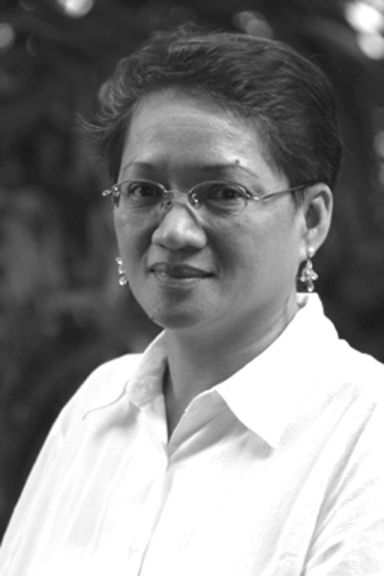
APALISOK
At the intimate dinner hosted by charity worker and hotelier, Norma Borromeo Thursday last week at the Montebello Garden Hotel, the conversation was still about the recently concluded Icon Pilgrimage Congress held in Baclaran, Parañaque City.
Norma kindly invited me to join fellow devotees Purie Cabahug, Solita Santamaria in the get together. Fr. Nico Perez, C.Ss.R., rector of the Shrine of our Mother of Perpetual Help in Cebu City and Fr.Galen Cortes, C.Ss.R. came with two young novices from Sri Lanka.
It is noteworthy to mention that the substantive part of the Congress, i.e., the talks and the interaction that followed after each presentation was held at the Romano Hall, in the adjoining building of the Baclaran shrine.
Dedicated in honor of Redemptorist “desaparecido,” Fr. Rudy Romano, the hall was officially opened two days ahead of the important Congress marking 150 years since Pope Pius IX handed over the sacred icon to the Redemptorist Congregation.
Fr. Romano went missing at the height of the Martial Law period when the military was keeping tabs on personalities critical of the Marcos dictatorship.
The Redemptorist missionary was a human rights advocate, who figured prominently in protest actions organized by militant labor and student groups. He was last seen on July 11, 1985, in Tisa, Barangay Labangon.
I recall airing updates about his forced disappearance, allegedly perpetrated by members of the military intelligence unit.
Although the case became a news staple every day, I don’t recall law enforcers investigating the case, let alone tracking down suspects even if there were people who witnessed the dastardly act.
As if to underscore the fact that his case remains unsolved close to 32 years after he was gone, Fr. Rudy is listed as “alive but missing” in the directory of the Redemptorist Visayas/Mindanao Province.
The Romano Hall is located in the building by the left side of the Baclaran shrine.
It is a new addition to the numerous offices and enterprises that the congregation runs.
A bookstore, a shop selling religious articles and some other offices are in the ground floor.
At the back, I saw an office that extends aid for groups in distress like women and children and overseas workers.
The Romano Hall is designed as a multi-purpose hall for meetings, special gatherings and can even serve as emergency lodging for congregation partners when the need arises, according to Rev. Fr. Ariel “Amang” Lubi, C.Ss.R., Provincial Superior of the Vice province of Manila.
I think the hall was not 100% finished when the Baclaran Congress opened in April 24, but it looked splendid just the same.
The mystery to this day is how the function hall, built to have room for 150 to 200 people at most, was able to accommodate double that number during the four-day Congress.
How providential that Fr. Rudy’s legacy, which could be summed up in his close engagement with the poor and marginalized, was at the core of many important presentations during the Congress. Rev. Fr. Carlos Ronquillo, C.Ss.R, shrine rector, talked about “entering into the chaos” or the situation of the people if the mission of redemption has to be realized.
If the last 110 years of devotion to the Mother of Perpetual Help in the Philippines has to bear fruit, it has to be a clearer understanding that the Marian devotion comes with a mission or action. Otherwise, it is all for show, according to Fr. Caloy Ronquillo.
“DeboMisyon” is a call to action.
Speaking of engaging the people, Redemptorist Superior General, Fr. Michael Brehl, C.Ss.R., who graced the important gathering, took time out to drop by the Sinirangan Coffee Shop located near the Carillon Tower in the Baclaran compound.
Sinirangan (Waray for Eastern) is famous for locally brewed coffee produced by the victims of Super Typhoon Yolanda in Eastern Samar, and I think it is gaining popularity also because it showcases the congregation’s social intervention.
Launched in 2014 by the Permanent Commission on Social Mission Apostolate, Sinirangan aims to help Yolanda victims recover from the devastation since they were left with practically nothing.
After coconut trees were toppled, people took to planting coffee because coconut takes years to yield fruit. It’s been more than two years since Sinirangan’s inception and from what I saw, the joint enjoys brisk business.
Because Sinirangan has a captive market owing to the popularity of the Baclaran devotion (10,000 devotees every Wednesday), I can only say the farmers in Eastern Samar have found a blessing in the aftermath of the super typhoon.
Fr. Brehl came in the company of the vice-superior, Fr. Alberto Eseverri, C.Ss.R. and religious sisters from Cebu who belong to a partner congregation. The Chief Redemptorist then went up to the young service crew, greeted and encouraged them one by one.
Later, they served the high profile guests from Rome with Sinirangan brewed coffee.
Fr. Brehl even agreed to have his picture taken with the group holding a bag of coffee like a proper celebrity endorser.
The farmers in Quinapondan, General MacArthur, Llorente and Giporlos, Eastern Samar would be thrilled to know the ranked clerics from Rome enjoyed their coffee.